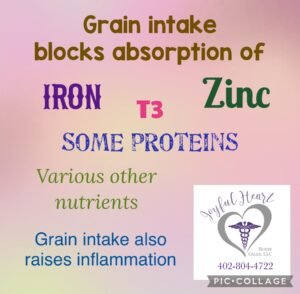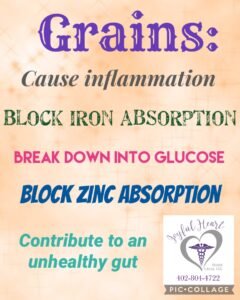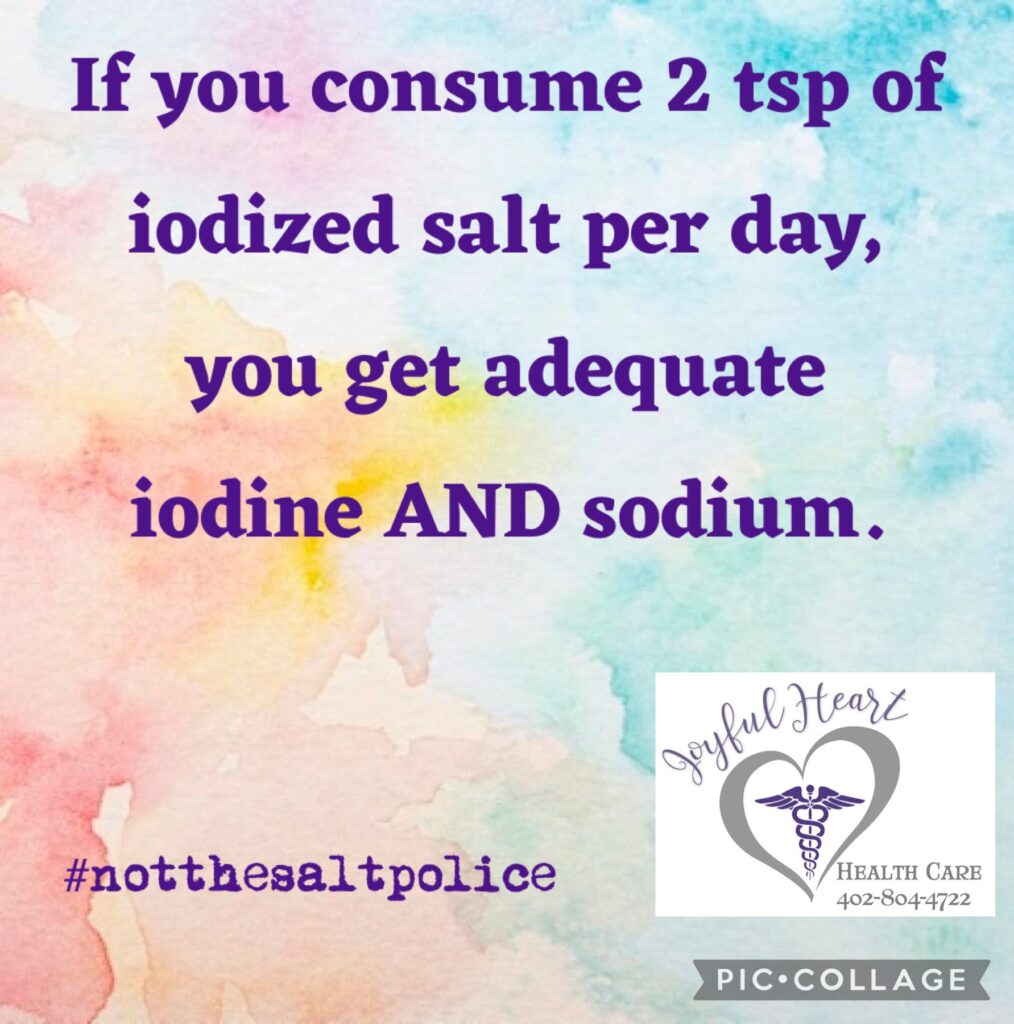
Does you get enough salt? Really? While mainstream medicine has told us for years to limit salt, it is considered an ESSENTIAL element. Essential elements MUST be consumed because the human body cannot synthesize or produce it from ingredients consumed.
Typically, we have been instructing patients to avoid salt for the past 40-50 years because of a THEORETICAL link between salt and water – that MIGHT raise blood pressure sometimes. However, various studies have indicated that only about 15% of the population is actually “salt sensitive” – meaning when these people increase their salt intake, they report swelling in their hands or feet.
For the remaining 85% of the population, increasing salt can reduce a myriad of symptoms, including some types of headaches/migraines, leg cramps, restless leg syndrome, various myalgias, and even brain fog.
Standard recommendations for salt intake previously ranged from 5 – 8 grams per day, depending on the country, organization, or agency. Limiting salt to 2 g or less per day is the current recommendation from most organizations. However, ancient civilizations are reported to have regularly consumed many times this amount without health impacts.
Click here to watch my Salt Video on YouTube:
For the population who consumes a typical Standard American Diet, SAD, full of packaged and processed food, adequate salt is generally consumed without effort; in fact, these are the patients who probably benefit from the “lower you salt” talk.
But as more and more people begin cutting processed and packaged foods, they are also drastically cutting their salt intake, sometimes dangerously low. It is THESE people that need to be cautioned and educated about low salt intake. It is these people that need to be reminded of just how important salt is; examples: the sodium-potassium pump and hydrochloric acid production REQUIRE adequate salt intake daily.
Encouraging patients to consume adequate salt presents a few challenges because we’ve all been programmed/trained/taught that salt is unhealthy. So, it may take a few times of teaching and repeating, but it’s important to help patients understand the NUTRIENT needs of the body.
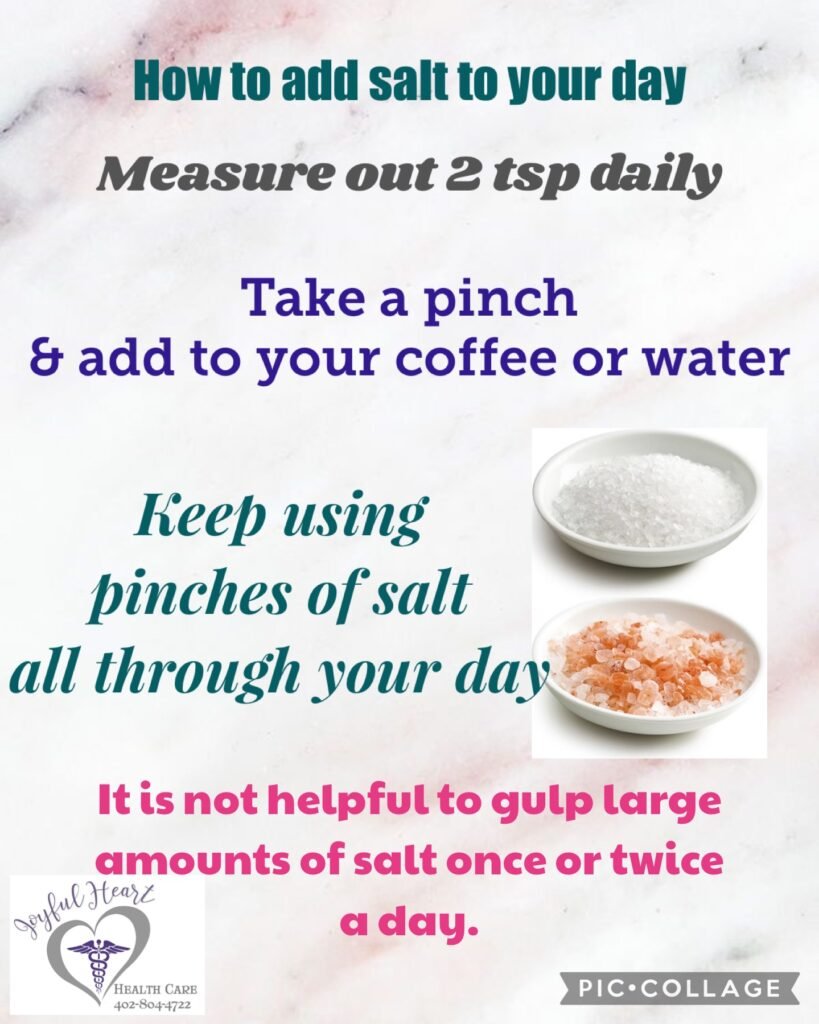
It’s easy to help patients visualize the amount by teaching them to measure out 2 teaspoons (NOT tablespoons) into a jar lid or small bowl in the morning. Have them pinch out of that amount all day to add to plates of food, or even to water bottles. Tiny amounts are all that is needed at first. It is NOT advised to put all 2 tsp. into 1 bottle of water, since that much salt can be a significant laxative, triggering GI spasms and/or headaches.
Getting the appropriate amount of salt per day can reduce migraines (See the Stanton Migraine Protocol for details), reduce muscle aches and joint pains, muscle cramping/Charley horses, and even problems with stomach acid.
Click here to get a few tips on Getting Your Salt In:
Extra Tip: Sodium blood levels at the lower end of range is not optimal; I encourage patients to aim for sodium levels at top half of range for best symptom resolution. People drinking more than ABOUT 100 oz of water per day may be flushing all the salt out, in addition to other electrolytes.
DISCLAIMER:
The information provided in this article and on the Joyful Heart Health Care & KetoNurses blog should be taken as basic & general information, and NOT as medical advice. All information presented by Joyful Heart Health Care & KetoNurses should be carefully evaluated and discussed with YOUR health care professional.


